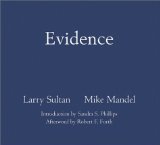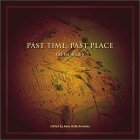 Larry Sultan was famed as both a photographer and archives researcher. He passed away on Sunday, December 13th, 2009 and his obituary in the New York Times describes his use of archival photographs as “harnessing found photographs for the purposes of art while using them as a way to examine the society that produced them”. The 59 photographs, selected in collaboration with Mike Mandel from a broad assortment of corporate and government archives, were originally displayed and published as a collection named ‘Evidence’ in 1977. A reprint of Evidence was published in 2004, including a new scholarly essay and additional images not in the original.
Larry Sultan was famed as both a photographer and archives researcher. He passed away on Sunday, December 13th, 2009 and his obituary in the New York Times describes his use of archival photographs as “harnessing found photographs for the purposes of art while using them as a way to examine the society that produced them”. The 59 photographs, selected in collaboration with Mike Mandel from a broad assortment of corporate and government archives, were originally displayed and published as a collection named ‘Evidence’ in 1977. A reprint of Evidence was published in 2004, including a new scholarly essay and additional images not in the original.
The Stephen Wirtz Gallery has a number of images from the 2004 exhibition available online and features this great summary of the original project:
Sultan and Mandel created the series Evidence with documentary photographs mined from image banks of government institutions, corporations, scientific research facilities, and police departments. An NEA grant gave the artists a persuasive edge in gaining access these resources, and images were selected for their mysterious and perplexing subject matter. The series was presented in an exhibition at the San Francisco Museum of Modern Art in 1977, and simultaneously collected in the book Evidence, which is recognized among the most important publications in the history of photography. Removed from their original contexts and repositioned without references to their sources, these images challenged the viewer to examine the conceptual concern of identifying meaning and authorship in the creation and consideration of the art photograph.
I used WorldCat to find the closest copy of Evidence and happily found a copy of the 1977 imprint at the Art Library at the University of Maryland, College Park. It had been a long time since I had looked at photographs on paper and bound in a book rather than on a computer monitor. I love the idea of re-purposing of archival image – but I was also fascinated to realize that the word ‘archive’ does not appear anywhere in the publication. Even the description above mentions ‘image banks’, not ‘archives’.
The organizations thanked at the start of the book included major corporations, U.S. federal agencies and a long list of highway, fire and police departments. Sultan and Mandel seemed to focus their research efforts in California and Washington, DC – perhaps due to a need to limit their travel. While today one would likely still need to travel to many archives to find images like those used in Evidence, there are so many images available online (at least for preview). How would someone approach a project like this now?
It is so easy to create a slide show or website featuring images from repositories from around the world. Even the images that have not been digitized have a decent chance of at least being mentioned in an online finding aid. The recently introduced Flickr Galleries make it easy to select up to 18 images from across Flickr – like my November Flickr Commons Photos of the Month Gallery. Also, much of the online culture of reuse encourages giving proper attribution for materials.
Part of Evidence’s power is the extraction of the images from their original context and their unexplained juxtaposition with one another. Finding and harvesting an image online would make it much harder to entirely strip that context away to leave the raw image behind. I can imagine a web-wide hunt for an image’s origin. While that might be fun (maybe an archives answer to the DARPA Network Challlenge?), it would not be the same as a sleek hardback book with 59 stark, unlabeled, black-and-white photos that sits on the shelf of an art library.
I find it poetic that Evidence’s photos are a perfect example of a ‘secondary value’ of archival records, even though the images were literally evidential records necessary for the carrying out of daily business. That said, I don’t believe that ‘possibly useful to future artists’ is a typical reason given for retaining and preserving archival records. We are just lucky that artists have been (and will almost certainly continue to be) innovative in their hunt for inspiration.
If you have the opportunity, I encourage you to sit quiety with a copy of Evidence. The images include landscapes, explosions, deep pits, plants, rocks, people, planes, machinery, wires and a car on fire. My laundry list of contents cannot begin to do the images justice – but I hope that they might wet your appetite.
This combination of gallery exhibition and book has inspired me to wonder about other similar projects that specifically leverage archival images for artistic purposes. Please list any that you are aware of in the comments (be they in gallery exhibitions or published volumes).

